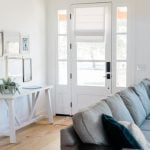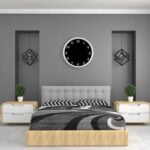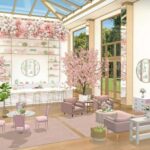Have you ever wondered how to interior decorate your own home to truly reflect your personal style and create a space that feels uniquely yours? Interior design plays a crucial role in transforming a house into a home, where every detail speaks to your tastes and preferences. From selecting the right colors to choosing the perfect furniture pieces, every decision contributes to the overall ambiance of your living space.
Understanding your individual style is key in achieving a cohesive and personalized look for your home. By identifying your aesthetic preferences and design sensibilities, you can begin to curate a space that resonates with who you are. Whether you lean towards modern minimalism or cozy farmhouse chic, recognizing what appeals to you will guide your decorating decisions and help bring your vision to life.
To kickstart your interior decorating project, creating a mood board can be an invaluable tool. Compiling inspirations, color schemes, furniture ideas, and decor elements onto a visual board will give you a clear roadmap for achieving the look you desire.
By gathering images and swatches that speak to you, you can start to see patterns emerge and shape the direction of your design choices. Stay tuned as we delve deeper into tips for identifying your personal aesthetic and design preferences in the following sections.
Understanding Your Style
When it comes to interior decorating your own home, understanding your personal style is crucial in creating a space that truly reflects who you are. One of the first steps in identifying your aesthetic and design preferences is to look at your wardrobe.
Your clothing choices often align with your decor style, whether it’s modern and minimalistic, eclectic and colorful, or classic and traditional. Take note of the colors, patterns, and textures you are naturally drawn to in your clothing as this can provide insight into the type of decor you may enjoy.
Another way to understand your style is by collecting inspiration from various sources such as Pinterest boards, home decor magazines, or even by visiting local furniture stores. Pay attention to the recurring themes or elements in the images that capture your interest. This process will help you pinpoint specific design styles like Scandinavian, industrial, farmhouse, or bohemian that resonate with you. Additionally, consider taking style quizzes online to further hone in on what design aesthetics appeal to you the most.
Once you have gathered a collection of design inspirations and identified your personal style preferences, don’t be afraid to mix different styles together to create a unique look that speaks to you. Combining elements from various styles can result in a space that feels curated and authentic to who you are.
Remember that interior decorating is a creative expression of yourself and there are no strict rules to follow – trust your instincts and let your imagination guide you in transforming your home into a place that truly feels like yours.
| Aspect | Description |
|---|---|
| Style Inspiration | Collect ideas from Pinterest boards, magazines, and furniture stores |
| Mixing Styles | Combine different design aesthetics for a unique look |
| Creative Expression | Trust your instincts and let your imagination guide you |
Creating a Mood Board
When creating a mood board for your home decor project, start by collecting inspiration from various sources such as magazines, websites, social media platforms like Pinterest, or even nature walks. Look for images that resonate with you and reflect your personal style preferences. Consider elements like color schemes, furniture styles, patterns, and textures that appeal to you and align with the overall look you want to achieve in your space.
Once you have gathered enough inspiration, organize your ideas on a physical or digital mood board. You can use tools like Canva, Pinterest boards, or even a simple bulletin board with printed images and swatches. Arrange the elements on your mood board in a way that makes sense to you – this could be by color scheme, room type (e.g.
living room, bedroom), or design style (e.g. modern, bohemian). By creating a visual representation of your vision for each room in your home, you can easily reference it throughout the decorating process and stay true to your initial design concept.
Budgeting and Planning
Setting a Budget
Before starting your interior decorating project, it is essential to establish a realistic budget. Determine how much you are willing to spend on each room or area of your home. Consider the cost of furniture, accessories, paint, and any necessary renovations. It is crucial to not only set a budget but also stick to it throughout the process. Research prices for items you need and prioritize where you want to invest more money.
Creating a Timeline
In addition to setting a budget, creating a timeline for your interior decoration project is key to staying organized and on track. Decide when you would like each room to be completed and work backward from there. Factor in any major holidays, events, or personal commitments that may affect the timeline. Be realistic about how much time each task will take and allow some flexibility for unexpected delays.
Seeking Professional Advice
If you are unsure about how to interior decorate your own home within a specific budget or timeframe, consider seeking advice from professionals. Interior designers can provide valuable insights and recommendations on cost-effective ways to achieve your desired look. They can also help create a comprehensive plan that suits your style and needs while staying within your financial constraints. Remember that professional guidance can save you time, money, and stress in the long run.
Room-by-Room Guide
When it comes to interior decorating your own home, one of the most crucial aspects is understanding how to tackle each space within your house. Each room presents its own unique challenges and opportunities for showcasing your personal style and creating a cohesive design aesthetic throughout your home. From the living room where you entertain guests to the bedroom where you unwind and recharge, here are some tips and tricks for decorating different spaces in your home.
Living Room
The living room is often considered the heart of the home, where family and friends gather to relax and socialize. When decorating this space, consider the functionality of the room – from seating arrangements to entertainment centers.
Start by selecting a focal point, such as a stunning piece of artwork or a statement furniture item, around which you can build the rest of the decor. Incorporate elements like throw pillows, rugs, and curtains in complementing colors and patterns to tie the space together.
Bedroom
Your bedroom should be a sanctuary that reflects your personality and promotes relaxation. When decorating this space, focus on creating a calming atmosphere with soothing colors and comfortable bedding. Consider adding personal touches like family photos or meaningful artwork to make the room feel more intimate. Use soft lighting options like bedside lamps or string lights to create a cozy ambiance that’s perfect for unwinding at the end of a long day.
Dining Room
The dining room is where families come together to share meals and create lasting memories. When decorating this space, prioritize functionality while still infusing elements of style and personality. Choose a dining table that fits comfortably in the room without overcrowding it, then pair it with chairs that are both comfortable and visually appealing. Consider adding a statement light fixture above the table to create a focal point in the room while also providing ample lighting during meals.
Color Psychology
Color plays a crucial role in interior design as it has the power to evoke various emotions and set the mood in a space. Understanding how different colors impact mood and atmosphere can help you create a harmonious and inviting home environment. Here are some key points to consider when incorporating color into your interior decorating project:
- Warm Colors: Colors like red, orange, and yellow are considered warm tones that can make a space feel cozy and intimate. These colors are known for stimulating energy and creating a lively ambiance in rooms like living areas or kitchens.
- Cool Colors: On the other hand, cool tones such as blue, green, and purple have a calming effect on spaces. They are ideal for bedrooms or home offices where relaxation and concentration are desired. Cool colors can also visually expand a room, making it feel more spacious.
- Neutral Colors: Neutral hues like white, beige, and gray act as versatile backdrops that can complement any design style. They create a sense of balance and sophistication in a room while allowing you to add pops of color through accessories or accent walls.
When deciding on the color scheme for each room in your home, take into consideration not only your personal preferences but also the function of the space. For example, if you want your bedroom to be a serene retreat for restful sleep, opt for soothing blues or greens. If you want your dining room to be a vibrant gathering place for family meals, consider warm tones like reds or oranges.
Experimenting with different color combinations can be fun but remember to take into account the natural light in each room as it can affect how colors appear. By understanding color psychology and its impact on mood and atmosphere, you can confidently choose the right hues to enhance your home decor.
Ultimately, incorporating color psychology into your interior design process allows you to create spaces that not only look visually appealing but also feel comforting and inspiring. Whether you prefer bold statement colors or subtle neutral tones, selecting the right palette can transform your home into a personalized sanctuary that reflects your unique style.
Furniture and Accessories
When it comes to interior decorating, furniture and accessories play a crucial role in defining the style and ambiance of your home. Selecting the right pieces can truly make a difference in complementing your space and enhancing your overall décor. Whether you prefer a modern minimalist look or a cozy traditional feel, choosing furniture and accessories that align with your personal aesthetic is key to creating a harmonious environment.
To start decorating your home with the right furniture and accessories, it’s important to first assess the size and layout of each room. Consider the function of the space and the flow of traffic to determine the best placement for each piece.
Create a list of essential items needed for each room, such as seating options, storage solutions, and decorative accents. Remember to measure your space carefully to ensure that each piece fits appropriately and allows for comfortable movement within the room.
Once you have a clear understanding of your room’s dimensions and needs, it’s time to consider the style of furniture and accessories that resonate with you. Are you drawn to sleek modern designs or do you prefer rustic farmhouse elements?
Take into account your personal preferences when selecting items such as sofas, chairs, tables, rugs, lighting fixtures, artwork, and decorative objects. By curating a cohesive collection of furniture and accessories that reflect your style, you can create a visually pleasing environment that feels like home.
When accessorizing your space, don’t be afraid to mix textures, materials, patterns, and colors to add depth and visual interest. Consider incorporating statement pieces like bold artwork or unique sculptures to infuse personality into your décor.
Additionally, layering textiles such as throw pillows, blankets, curtains, and rugs can help soften hard surfaces and introduce warmth into the room. Remember that selecting the right furniture and accessories is not just about functionality but also about expressing your individuality and creating a space that truly reflects who you are.
DIY Projects
Incorporating do-it-yourself (DIY) projects into your interior decorating can not only add a personal touch to your home but also save you money. One way to start is by upcycling old furniture pieces or decor items to give them a fresh look that aligns with your aesthetic. Whether it’s repainting a thrifted dresser, reupholstering a chair, or adding new hardware to a cabinet, DIY projects allow you to customize your space without breaking the bank.
Another creative DIY project idea is creating your own artwork or wall decor. You can easily make personalized pieces by painting canvases, framing prints of your favorite quotes or photos, or even crafting unique wall hangings using materials like yarn, macrame, or dried flowers. These homemade touches not only showcase your creativity but also add character and individuality to your home.
For those who enjoy crafting, consider making custom throw pillows, curtains, or table runners to match your decor theme. Sewing simple pillow covers or hemming curtains can be relatively easy and cost-effective compared to purchasing new items. Additionally, DIY fabric projects allow you to experiment with different patterns, textures, and colors that suit your style preferences. By incorporating these handmade elements throughout your home, you can create a cohesive look that truly reflects your personality and design taste.
Maintenance and Upkeep
After you have successfully completed your interior decorating project and achieved the perfect look for your home, it is important to focus on maintenance and upkeep to sustain the beauty of your newly designed space. Maintaining the look and feel of your home involves regular cleaning, organizing, and making minor adjustments to ensure that the aesthetic you worked so hard to create remains intact.
One of the key aspects of maintaining the look of your home is to establish a cleaning routine that fits your lifestyle and schedule. Regular dusting, vacuuming, and wiping down surfaces can go a long way in preserving the freshness of your decor. It is also essential to pay attention to specific materials and finishes in your home, such as wood or fabric, and use appropriate cleaning products to prevent any damage.
In addition to regular cleaning, organizing your space can also contribute to maintaining the overall look and feel of your interior design. Simple decluttering techniques, such as utilizing storage solutions like baskets or shelves, can help keep your space organized and visually appealing. By staying on top of clutter and mess, you can ensure that your carefully curated decor shines through without being overshadowed by disorderliness.
Conclusion
In conclusion, interior decorating your own home is a rewarding and fulfilling process that allows you to create a space that truly reflects your personality and style. By following the tips and guidelines provided in this article, you can embark on a journey to transform your living environment into a place that feels uniquely yours. Understanding your style, creating mood boards, setting budgets, and exploring color psychology are just some of the essential steps in the interior decorating process.
One of the most important aspects of interior decorating is selecting the right furniture and accessories that complement each other and enhance the overall aesthetic of your space. Additionally, incorporating DIY projects into your decor can add a personal touch and make your home feel even more special. Remember that maintaining and keeping up with the upkeep of your newly decorated home is key to preserving its beauty for years to come.
So, whether you’re starting from scratch or looking to refresh your current design, don’t be afraid to experiment with different ideas and styles to create a home that brings you joy. With dedication and creativity, you can learn how to interior decorate your own home in a way that speaks volumes about who you are and what you love. Good luck on your interior decorating journey.
Frequently Asked Questions
How Do I Design My Own House Interior?
Designing your own house interior requires careful planning and consideration. Start by defining your style, creating a mood board, and determining a color scheme. Consider the function of each room and prioritize practicality along with aesthetics.
What Are the 7 Principles of Interior Design?
The 7 principles of interior design are unity, balance, contrast, rhythm, emphasis, scale/proportion, and harmony. These principles guide designers in creating spaces that are visually appealing, functional, and cohesive.
Can You Do Interior Design Yourself?
Yes, you can do interior design yourself if you have an eye for design and are willing to put in the time and effort to research and plan. DIY projects can be fulfilling and cost-effective options for home improvement projects.

I’m thrilled to be your companion on this exciting journey through the world of home decor and design. With a passion for turning houses into homes and a keen eye for the finer details, I’m here to help you transform your living spaces into beautiful, functional, and meaningful havens.





